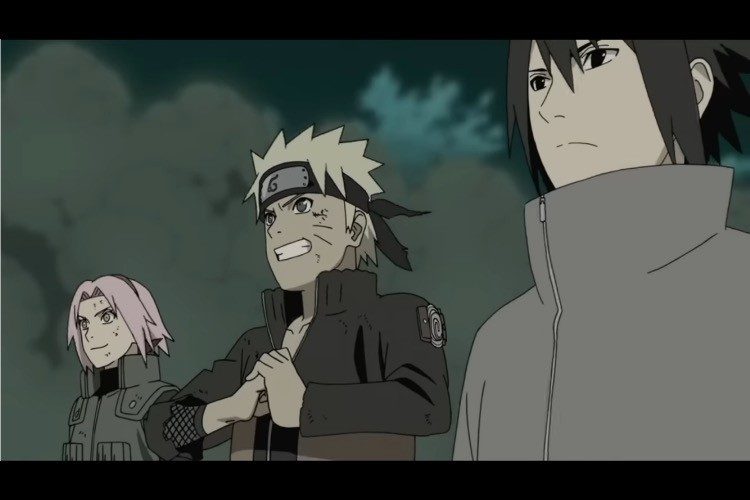
Anime has taken the world by storm. Anime — Japanese animation — was once considered a silly indulgence. However, in recent years — especially when people had too much time on their hands due to Covid-19 — it has become all the rage for millennials and Gen-Zs, even becoming something that families can watch together.
Perhaps part of anime’s popularity is its diversity; anime can have any plot, it can violate the laws of physics, and it can have any genre, spanning from romance/comedy/action such as the recent anime hit, SPY X FAMILY, to fantasy/action/thriller, such as Attack On Titan, which is possibly one of the most infamous animes of all time. A personal favorite anime of mine was Death Note, a psychological horror anime.
The use of animation is certainly a source of creativity — and as CanCulture quotes from a tweet, “In anime, the writer’s imagination is their limit.” And it is. Netflix has tried to make anime live-action remakes, and each one has failed spectacularly. The reason for this is that anime is often impossible to reproduce using physical actors — or it at least makes the filming process more expensive. The magic of animation is that there are no real-life limitations of physics, plots, scenery, et cetera.
And possibly, it is partly due to the change in technology. Instead of relying on old television programming, you can use streaming services such as Hulu or Netflix and can easily indulge in the genre, according to CBR. Especially during times of self-isolation and a lot more free time, there has been a growing audience for the art style.
All of this has allowed Japan in particular to monopolize this form of entertainment. Sure, America has tried, but the sheer volume of anime available in Japan because of decades of cultivation has allowed Japanese anime to continue dominating the market, according to Statista.
Leaving aside economics, it isn’t just the act of watching that the fans enjoy. Anime has grown to such popularity that it has an entire subculture. There are anime-cons (large events hosted to bring fans together), merchandise, cosplayers (those who dress up to replicate their favorite characters), and online communities centered on the television style.
However, the growing popularity comes with stipulations. Sometimes, a viewer cares so deeply about the genre that it becomes an addiction, just like video games or shopping or any other addiction. Anime addictions arise from the same impulses as video-game addiction: escapism, boredom, FOMO (“fear of missing out”), and the lack of in-person social connections, according to Game Quitters. And due to its novelty, there has yet to be much research into the phenomenon by psychologists.
Some of the more infamous animes are the aforementioned ones. Attack On Titan is one that has been in the spotlight for years now. It is a rather gruesome anime, as its general plot centers around normal humans in Germany fighting off large, human-eating giants. It’s still a deeply meaningful anime though, exploring ideas such as mourning, war, and resilience.
Another is Death Note. The entire plot is about a random student being given a notebook that can kill anyone that the bearer wants dead. Throughout the show, it shows how absolute power can corrupt and that no singular person is fit to have such tremendous power. It is an absolutely gut-wrenching show to watch.
Anime is not without its controversies. There are certainly fantastic, engaging animes, but there are also nasty, immoral ones. There is a category of anime called “hentai,” which, to put it plainly, is animated porn. And hentai — and even certain “family friendly” animes — have very controversial characters. Some animes might as well be advertised for pedophiles only, as several animes include lolitas, something that has been in the spotlight of controversy.
Lolitas are adult women who have the appearance, voice, and most likely, personality of a child. Some animes that include lolita characters are Date A Live, Miss Kobayashi’s Dragon Maid, and One Piece (One Piece being the longest and perhaps the most famous anime and manga ever to be created). With Elon Musk having recently taken over Twitter, the term “loli” was banned on the platform entirely, according to AnimeSenpai, and even before Twitter, Facebook banned the terminology, too.
Another issue often present in anime is the theme of incest. In modern anime, it tends to be replaced with siblings who are step-siblings and are not related, but in the past and in hentai, it was blatant and sexualized. Some obviously sexual relations are found in animes such as Kiss X Sis, Ore no Imouto ga Konnani Kawaii Wake ga Nai, Citrus, and many others that are simply famous because of the incestual themes involved.
So, as incredible as anime can be due to the diversity and creative freedom, that can also lead to moral controversies such as pedophilia and incest. But regardless, anime is an art form that has taken over the television habits of many people, and its popularity is not likely to wane anytime soon.


